Commodity taxation in India is centuries old, the current system being followed in India owes its origin to the British rule…
Commodity taxation in India is centuries old, the current system being followed in India owes its origin to the British rule. India is a Union of 29 States. The Constitution of India empowers the Central (Federal) Government to levy and collect certain taxes and also empowers the States (Provinces) to levy and collect certain taxes.
Excise duty is levied on goods manufactured in India and the payment of such duty to the exchequer shall be made when such goods are removed from the factory of their production. The concept of sale is absent in the excise law and hence the word removed. Customs duties are levied on import of goods into India and on certain goods exported out of India. Tax on services is of much more recent origin, since 1994 service tax is levied on services provided. These are the major duties and taxes levied and collected by the Central Government.
The States levy and collect tax on sale of goods within their borders. The Centre levies a tax on goods sold from one State to another and the State from where the movement of such goods commences is empowered to collect the tax. The tax levied and collected by States on sale of goods within its borders was known as Sales Tax and now it is known as VAT. The tax levied by the Centre on sale of goods to a customer who is located outside the border of one State and is collected by the State from where the movement of goods originates is known as Central Sales Tax.
Contrary to the principles of consumption tax, India follows the origin principle and not the destination principle. The tax is levied and collected at the originating point and not at the final destination or consumption. Due to this strict border controls in the form of check points and inspection of vehicles during their movement by tax authorities hinder free movement of goods, from its origin point to its destination especially when the destination of the vehicle is outside the State.
India, probably, may be only amongst few Countries were consumption tax is levied and collected both by the Centre as well as by the State. In Developed economies like Australia and EU VAT / GST is collected by only one Government and distributed to provinces or States as per a pre-determined formula. Dual power is the challenge which India currently encounters in its reform to GST.
Registration with the tax authorities is another big challenge. While registering with excise or service tax authorities a tax payer after logging into the Government portal and obtaining a registration number must also submit documentary evidences in physical format so that the registration obtained through e-mode is activated in order that that the registered entity can gain access to the portal for payment of duties and taxes. Registration is followed up by inspection of premises, in certain cases, prior to activation. The challenge is encountered when registering with the State authorities. As premised above, there are 29 States in India and if a tax payer has 20 permanent establishments each in different State from were operations are carried on then each establishment must separately obtain registration in each of the 20 States.
The question of one single levy and collection of VAT/GST is ruled out in India due to its Constitutional structure. VAT / GST is currently collected in the name of Excise Duty, Service Tax and State VAT. These and further other minor taxes will be merged in two legislations, the Central Goods and Services Tax (CGST) and State Goods and Services Tax (SGST). CGST will be levied across the Country on all transactions above the exemption limit and SGST will be levied by the respective State on goods and services consumed, above the exemption limit, within its borders. It must be appreciated here, that India will move from origin principle to destination principle as and when the new law becomes applicable. However, the credit of tax paid towards CGST will be available only against CGST and SGST against SGST, meaning, credit of CGST against SGST and vice versa will be prohibited. Given this scenario it will be a truncated GST.
The Government is confident that implementation of GST will boost the Indian Economy and the GDP of the Country will see a 2% increase. Though the tax gap in a Country like India cannot be eradicated in full use of information technology in implementation of the law will bring down the same considerably as linking transactions will become much easier making it difficult to keep the transaction out of books unless both the buyer and the seller in unison agree to resort to such mechanism.
It is expected that GST will ensure ease of compliance thereby bringing down the cost to the business. Criticism is also gaining ground that GST will force business to invest in technology, those who have never embraced technology will be forced to change and those are already into technology will also be forced to make changes due to the new requirements of the law. However, this will be only a one time affair, hopefully.
India is blessed with green agriculture, dry desert, enchanting wildlife, free flowing rivers, sprawling lakes, beautiful snow, challenging mountains, romantic hill stations, long sea shores, several religions, multiple languages, the list is endless. There is no parallel for this Country anywhere in the World. It is this fullness of India which makes it a difficult Country to administer and this is the reason why it takes long time to put in place a well-knit uniform tax law like GST. But the day this is done India will become a trendsetter for other Countries. Many Governments are waiting to learn from the Indian Dual GST experience and hopefully we will set the trend for a new World order.
Rajendra Kumar
Sanjiv Shah & Associates

